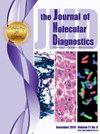The Correlation between Plasma Circulating Tumor DNA and Radiographic Tumor Burden
IF 3.4
3区 医学
Q1 PATHOLOGY
引用次数: 0
Abstract
Conventional blood-based biomarkers and radiographic imaging are excellent for use in monitoring different aspects of malignant disease, but given their specific shortcomings, their integration with other, complementary markers such as plasma circulating tumor DNA (ctDNA) will be beneficial toward a precision medicine–driven future. Plasma ctDNA analysis utilizes the measurement of cancer-specific molecular alterations in a variety of bodily fluids released by dying tumor cells to monitor and profile response to therapy, and is being employed in several clinical scenarios. Plasma concentrations of ctDNA have been reported to correlate with tumor burden. However, the strength of this association is generally poor and highly variable, confounding the interpretation of longitudinal plasma ctDNA measurements in conjunction with routine radiographic assessments. Herein is discussed what is currently understood with respect to the fundamental characteristics of tumor growth that dictate plasma ctDNA concentrations, with a perspective on its interpretation in conjunction with radiographically determined tumor burden assessments.
血浆循环肿瘤 DNA 与放射肿瘤负荷之间的相关性。
传统的血液生物标记物和放射成像在监测恶性疾病的不同方面表现出色,但考虑到它们的具体缺陷,将它们与血浆循环肿瘤 DNA 等其他补充标记物整合在一起将有利于未来的精准医疗。血浆循环肿瘤 DNA 分析利用测量垂死肿瘤细胞释放的各种体液中的癌症特异性分子变化来监测和分析对治疗的反应,目前已被应用于多种临床方案中。据报道,血浆中循环肿瘤 DNA 的浓度与肿瘤负荷相关。然而,这种关联的强度通常很低,而且变化很大,这给结合常规放射学评估进行的纵向血浆循环肿瘤 DNA 测量的解释带来了困惑。本文讨论了目前对决定血浆循环肿瘤 DNA 浓度的肿瘤生长基本特征的理解,并对结合放射学确定的肿瘤负荷评估进行解释提供了视角。
本文章由计算机程序翻译,如有差异,请以英文原文为准。
求助全文
约1分钟内获得全文
求助全文
来源期刊
CiteScore
8.10
自引率
2.40%
发文量
143
审稿时长
43 days
期刊介绍:
The Journal of Molecular Diagnostics, the official publication of the Association for Molecular Pathology (AMP), co-owned by the American Society for Investigative Pathology (ASIP), seeks to publish high quality original papers on scientific advances in the translation and validation of molecular discoveries in medicine into the clinical diagnostic setting, and the description and application of technological advances in the field of molecular diagnostic medicine. The editors welcome for review articles that contain: novel discoveries or clinicopathologic correlations including studies in oncology, infectious diseases, inherited diseases, predisposition to disease, clinical informatics, or the description of polymorphisms linked to disease states or normal variations; the application of diagnostic methodologies in clinical trials; or the development of new or improved molecular methods which may be applied to diagnosis or monitoring of disease or disease predisposition.

 求助内容:
求助内容: 应助结果提醒方式:
应助结果提醒方式:


